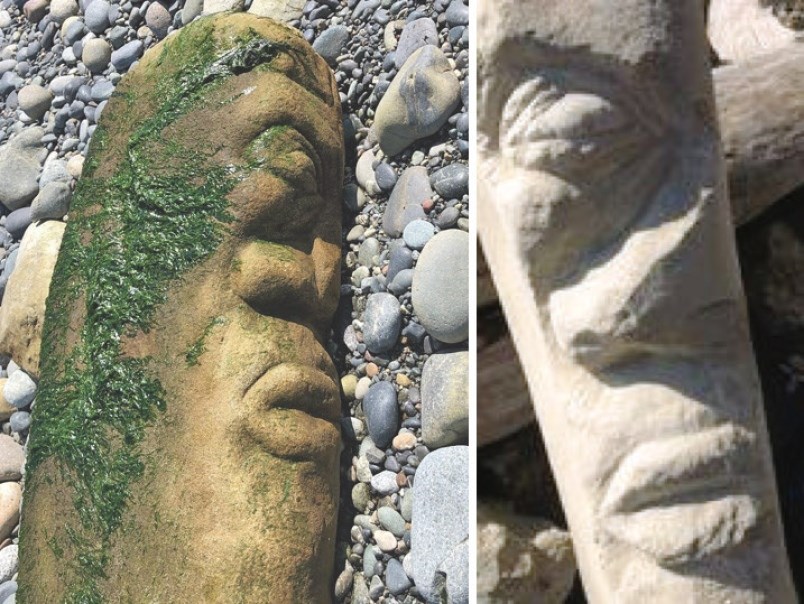A local artist says he couldn’t believe his eyes when he saw a photo of his rock carving being heralded as an Indigenous artifact by the Royal British Columbia Museum.
“I was totally surprised,” Ray Boudreau said Sunday. “It’s absolutely, 110 per cent my carving. I knew right away it was my carving. I looked at my phone frantically: ‘Oh yeah. There’s those pictures.’ ”
Boudreau’s photographs, with the date stamp Jan. 23, 2017, bear a strong resemblance to the 100-kilogram stone pillar found on a beach off Dallas Road at low tide last summer.
The museum announced last week the discovery of the stone pillar, and said it was likely used in rituals by the Songhees and Esquimalt First Nations.
The provenance of the pillar will be reviewed with the museum, the Songhees and Esquimalt First Nations and the carver, said museum spokesman Wesley Mcinnis.
Boudreau knew the stone was unusual. He found it a couple of days after two barges smashed into the shore near Dallas Road and Cook Street in late February 2016. One of the barges was loaded with heavy scrap and construction debris such as concrete and pilings from the Coho ferry terminal construction site.
He started to carve his find.
The rock is not real sandstone but another kind of rock used by First Nations that turns black and shiny when it’s polished, said Boudreau.
“It’s only porous because it’s been battered around by the ocean. It’s a pretty nice rock. The stuff is so like butter. You hardly have to hammer the thing, it carves so clean and so easy. I fell right in love with this thing when I found it.”
When his carving disappeared, he assumed it had been stolen because he had tucked it way up on the shore.
“There’s no way the waves would ever take it away. But I thought ‘Well, nobody really owns a rock.’ ”
The 65-year-old security guard believes people carried it off in a boat, but were forced to dump it.
Boudreau has been carving all his life, making leather saddles and leather book covers which have been sold all over the world. He has 10 rock carvings on the beach below Dallas Road.
At first, after the museum announcement, Boudreau wasn’t sure what to do.
“Do you shut your mouth about it or let it go? The thing took on a life of its own and it would have had a beautiful life if I hadn’t said anything.”
In the end, he decided the museum and the local First Nations should know the truth.
“I didn’t want to live a lie,” he said.
Still, he was also surprised that the carving — more Easter Island than Vancouver Island — was mistaken for a First Nation’s artifact.
“It looks more exotic,” he said. “But what is embarrassing to me is that, if it was beautiful and I’d finished it, people would look at it and say ‘Oh, it’s so awesome.’ But it was so ugly. I only worked on it for 15 hours or so. It wasn’t up to standard. I would have liked better bragging rights.”
Boudreau said he will meet with the museum to set the record straight and see what happens next. He’d like to get the rock back and finish the carving.
“It’s funny how it grew legs. … It took on a whole new life. Maybe there’s something spiritual in that rock that keeps raising its head.”



